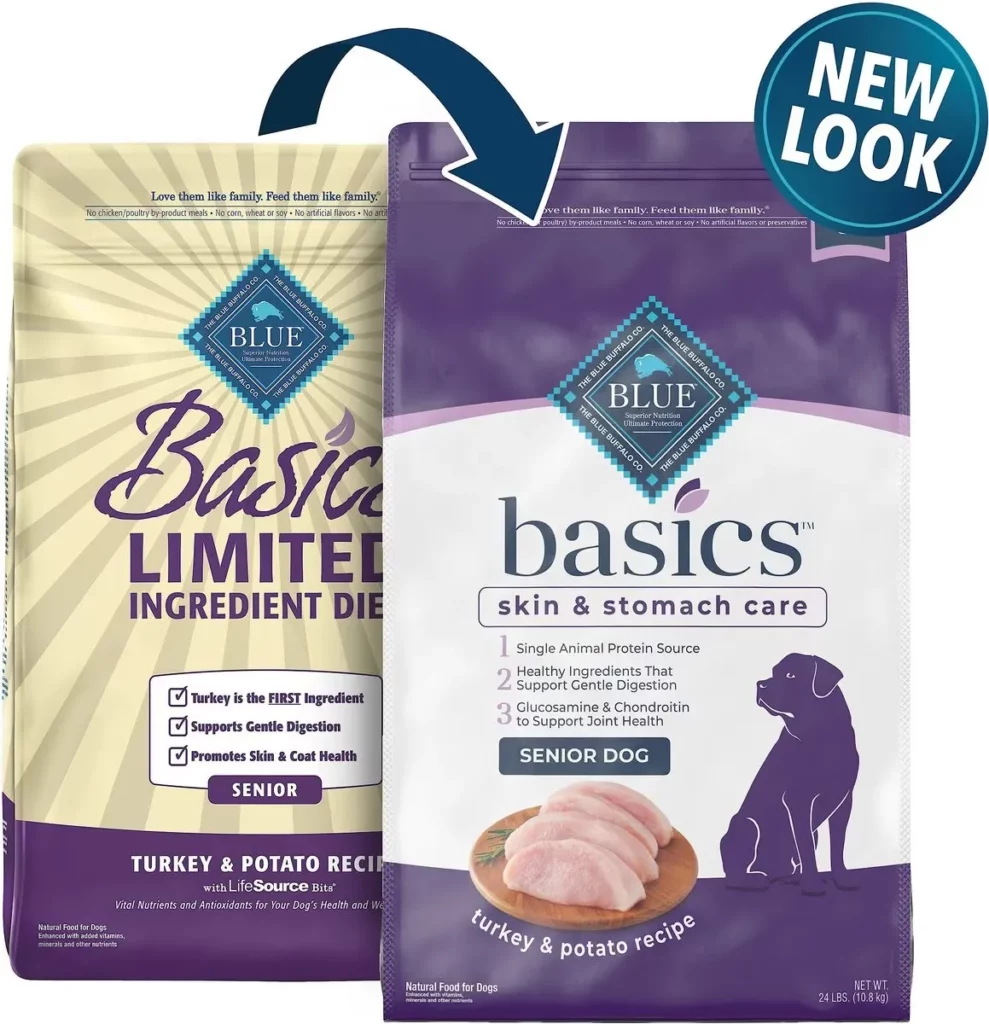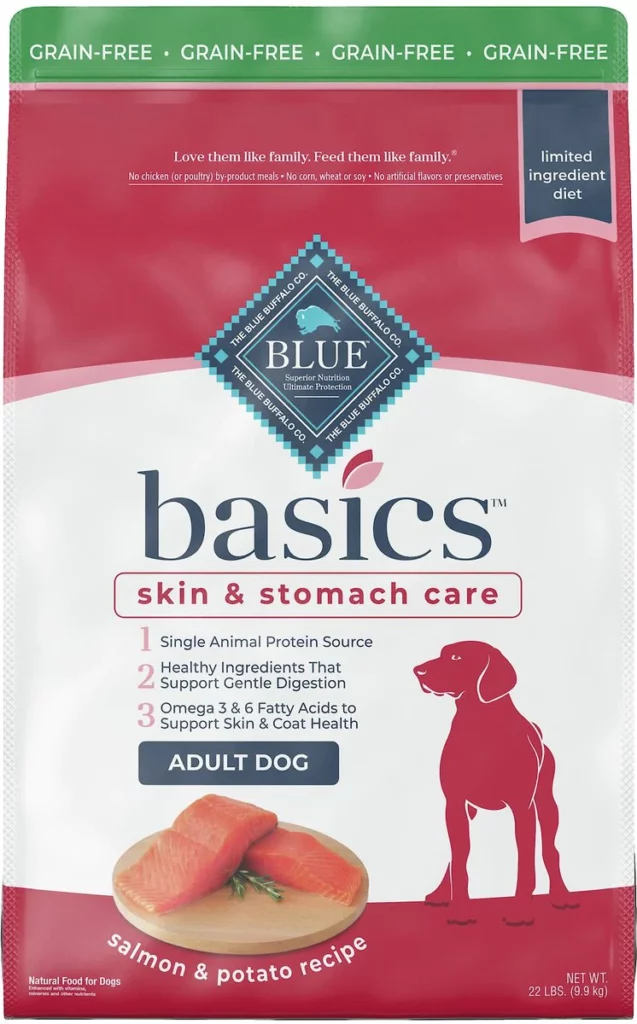Picture this: You’re standing in the pet food aisle, staring at rows of kibble bags, each claiming to be the “healthiest choice” for your dog. One label boasts high protein for energy, while another promises gentle nutrition for sensitive systems. It’s enough to make any pet parent wonder: Will too much protein hurt my dog’s kidneys?
For decades, this question has fueled a whirlwind of confusion. The idea that high-protein diets universally damage canine kidneys has persisted like a stubborn rumor—despite mounting evidence to the contrary. While it’s true that some dogs require carefully managed protein intake, the blanket fear of protein is outdated and oversimplified. Let’s untangle the science, explore when low protein dog food diets matter, and empower you to make informed choices for your four-legged companion.
The Myth vs. The Reality
The belief that protein harms kidneys stems from early studies on rats and humans with pre-existing kidney disease—not healthy dogs. Here’s what modern veterinary science tells us:
- Healthy kidneys can handle protein. Dogs evolved as carnivores, thriving on protein-rich diets. Their bodies are designed to process it efficiently.
- Low protein isn’t a “preventative” measure. Restricting protein unnecessarily can deprive active or growing dogs of essential nutrients.
- The real concern? Pre-existing conditions. Dogs with diagnosed kidney disease, certain genetic disorders, or senior pets with declining organ function may benefit from adjusted protein levels.
When Low-Protein Diets Shine
Like humans, every dog has unique needs. Here are scenarios where a vet might recommend reducing protein:
- Chronic kidney disease (CKD): Damaged kidneys struggle to filter waste from protein breakdown, so moderation eases their workload.
- Liver disease: Specific metabolic issues may require tailored nutrition.
- Genetic conditions: Breeds prone to kidney or urinary disorders (e.g., Dalmatians, Cocker Spaniels) might need early dietary adjustments.
Choosing Wisely: A Balanced Approach
Selecting the right food isn’t about protein percentages alone. Consider:
- Your dog’s life stage: Puppies and athletes need more protein; seniors may need less, depending on their health.
- Ingredient quality: Highly digestible proteins (chicken, fish) are kinder to the body than fillers or by-products.
- Veterinary guidance: Always consult your vet before switching diets—they’ll assess bloodwork, urine tests, and overall health.
By understanding why and when protein matters, you can move beyond fear-based decisions and focus on what truly supports your dog’s vitality. Let’s dive deeper into the signs that your pet might need a diet change—and how to navigate the options with confidence.

Bundle: Blue Buffalo Basics Limited Ingredient Diet Turkey & Potato Recipe Senior Dry Dog Food, 24-lb bag +
Blue Buffalo Basics Limited Ingredient Formula Biscuits Turkey & Potato Dog Treats, 6-oz bag
When to Consider a Low-Protein Diet for Your Dog
Imagine your dog, once bursting with energy, now seems sluggish. Their water bowl empties faster than usual, or maybe they’ve lost interest in their favorite treats. These subtle shifts could signal an underlying health issue—one where adjusting their diet becomes a lifeline, not just a lifestyle choice.
While protein is a cornerstone of canine nutrition, there are moments when less truly becomes more. Think of it like a tailored prescription: specific conditions demand specific solutions. Here’s when veterinarians might suggest dialing back protein to support your dog’s well-being:
1. Kidney Disease: Easing the Filtering Burden
The kidneys act as your dog’s internal filtration system, breaking down protein waste. When these organs weaken—due to age, illness, or congenital issues—they struggle to manage excess nitrogen from protein metabolism. A moderated plan can:
- Reduce strain on damaged kidneys, slowing disease progression.
- Minimize symptoms like excessive thirst, weight loss, or nausea.
- Prioritize quality over quantity, focusing on highly digestible proteins (e.g., eggs, lean poultry) to meet needs without overload.
Example: Senior dogs with chronic kidney disease (CKD) often thrive on diets with controlled protein levels paired with increased omega-3 fatty acids to combat inflammation.
2. Liver Disorders: Balancing Metabolic Demands
The liver processes toxins and regulates nutrients, including proteins. When compromised—by infections, toxins, or genetic conditions like portosystemic shunts—it can’t efficiently metabolize ammonia, a byproduct of protein breakdown. Adjusting intake helps:
- Lower ammonia buildup, preventing neurological issues like disorientation or seizures.
- Support liver regeneration by reducing its workload.
- Focus on amino acid balance, ensuring critical nutrients like arginine aren’t neglected.
3. Certain Bladder Stones: Breaking the Cycle
Not all bladder stones are created equal. Struvite stones, for instance, often form in alkaline urine and can sometimes dissolve with targeted diets. However, urate stones—common in Dalmatians due to a genetic quirk—thrive on purine-rich proteins (organ meats, certain fish). For these cases:
- Low-purine proteins (e.g., eggs, dairy) help prevent stone recurrence.
- Increased hydration flushes the urinary tract, complementing dietary changes.
4. Rare Metabolic Conditions: Tailored Nutrition
Some dogs inherit disorders like hyperammonemia, where their bodies can’t process protein-derived ammonia. For them, a strict low-protein regimen isn’t optional—it’s essential for survival.
The Golden Rule: Never Guess—Test
Switching your dog’s diet without veterinary input risks doing more harm than good. Protein isn’t the enemy; imbalance is. Before making changes, your vet will likely recommend:
- Bloodwork and urinalysis to assess kidney and liver function.
- Imaging (e.g., ultrasound) to check for stones or structural issues.
- Breed-specific screening for predisposed conditions.
Remember: Even dogs with these conditions need some protein—it’s about precision, not elimination. A golden retriever with kidney disease and a working border collie with liver issues won’t have the same nutritional blueprint.
By partnering with your vet, you’re not just choosing a bag of kibble. You’re crafting a strategy to help your dog live longer, wag harder, and savor every belly rub along the way.

Natural Balance L.I.D. Limited Ingredient Diets Lamb & Brown Rice Formula Large Breed Dry Dog Food
The Truth About Protein and Kidney Health
Let’s start with a story you might recognize: A concerned dog owner, after scrolling through online forums, swaps their pup’s protein-rich kibble for a lower-grade option, convinced it’ll “protect” their kidneys. But here’s the twist—their dog’s kidneys are perfectly healthy. This well-meaning choice, rooted in decades of misinformation, highlights a critical misunderstanding about canine biology.
The Great Protein Debate: Busting the Myth
For years, protein has been wrongly vilified as a kidney villain. The confusion began when studies on rats with pre-existing kidney damage showed protein worsened their condition. But dogs aren’t rodents—and healthy organs don’t behave like diseased ones. Here’s what the research reveals:
- Healthy kidneys thrive on protein. Dogs evolved from wolves, built to metabolize meat-heavy diets. Their kidneys efficiently filter waste from protein breakdown without strain.
- No link to kidney disease in healthy dogs. A 2018 Cornell University study found no evidence that high-protein diets cause kidney issues in dogs with normal organ function.
- The real risk? Undernourishment. Restricting protein in active or growing dogs can lead to muscle loss, weakened immunity, and dull coats.
When the Rules Change: Compromised Kidneys
Now, imagine an aging Labrador named Max. His kidneys, weakened by years of filtering toxins, start to lag. This is where protein moderation becomes a hero—not a villain. For dogs with diagnosed kidney disease (CKD), reducing protein:
- Lowers nitrogen waste production, easing the kidneys’ workload.
- Helps manage symptoms like vomiting, lethargy, and excessive thirst.
- Prioritizes quality, using highly digestible proteins (e.g., egg whites, fish) to meet needs without overburdening organs.
But there’s a catch: Protein isn’t eliminated—it’s optimized. Even dogs with CKD require some protein to maintain muscle mass and overall health. The goal is balance, not deprivation.
Why the Distinction Matters
Confusing “healthy” and “diseased” kidney needs can lead to harmful choices. For example:
- A young, energetic Border Collie on a low-protein diet may lack fuel for their active lifestyle.
- A senior Dachshund with CKD fed a high-protein diet could accelerate kidney decline.
The takeaway? Context is everything. Regular vet check-ups—including bloodwork and urinalysis—are the only way to gauge kidney function accurately. Don’t let internet lore dictate your dog’s plate.
The Bottom Line
Protein isn’t a foe or a friend—it’s a tool. Like a thermostat, it’s about adjusting levels to suit your dog’s unique biology. Trust modern science, not outdated myths, and let your vet guide you through the why and how of dietary choices. After all, a well-informed owner is a dog’s greatest advocate.

Hill’s Science Diet Senior Adult 7+ Small Bites Chicken Meal, Barley & Rice Recipe Dry Dog Food
How to Select a Quality Low-Protein Dog Food
Picture this: You’re scrolling through online pet stores, faced with a sea of “low-protein” labels. One bag claims to support kidney health, another promises “all-natural” ingredients and a third is half the price of the others. But here’s the catch—not all low-protein diets are created equal. Choosing the right one isn’t just about cutting protein; it’s about precision, balance, and matching your dog’s unique needs.
Over-the-Counter vs. Prescription Diets: Know the Difference
- Over-the-counter (OTC) options are often marketed as “light” or “senior” formulas. While they may have slightly reduced protein levels, they’re designed for general wellness, not medical management.
- Prescription diets are formulated under veterinary supervision for specific conditions like kidney disease. These recipes undergo rigorous testing to ensure they meet strict nutritional standards—think of them as “medicine in kibble form.”
Example: A Chihuahua with early-stage kidney disease might thrive on a prescription diet with controlled phosphorus, while a healthy senior dog could do well with a high-quality OTC senior formula.
What to Look For: Beyond the Protein Percentage
Reducing protein is just one piece of the puzzle. A truly supportive diet addresses these factors:
- Controlled Phosphorus Levels
Kidneys struggling to filter waste also struggle with phosphorus regulation. Excess phosphorus can accelerate kidney damage. Aim for:- Lower phosphorus content (ideally under 0.5% on a dry matter basis).
- Added binders like calcium carbonate to limit absorption.
- Highly Digestible Protein Sources
When protein is limited, every gram counts. Prioritize:- Eggs, fish, or lean poultry over plant-based proteins (e.g., soy, corn gluten), are harder for dogs to utilize.
- Avoid vague terms like “meat meal” or “animal by-products”—transparency matters.
- Balanced Nutrients
- Omega-3 fatty acids (from fish oil) to reduce inflammation.
- Added antioxidants (vitamins E and C) to support immune function.
- Moderate sodium to ease blood pressure on delicate kidneys.
The Pitfalls of DIY or Generic Brands
A well-meaning pet parent might opt for a homemade low-protein diet or a budget-friendly store brand. But without expert formulation, these can:
- Lack of essential amino acids leads to muscle wasting.
- Skimp on calorie density, causing unintended weight loss.
- Ignore mineral balance, worsening conditions like bladder stones.
Case in point: A homemade chicken-and-rice diet might seem gentle, but it’s often deficient in calcium, potassium, and other nutrients critical for dogs with organ issues.
The Non-Negotiable Step: Partner With Your Vet
Your veterinarian isn’t just a gatekeeper for prescription diets—they’re your co-pilot in decoding labels and avoiding marketing gimmicks. Before switching foods, they’ll likely:
- Review bloodwork and urine tests to confirm protein restrictions are needed.
- Calculate the ideal calorie intake based on your dog’s weight and activity level.
- Monitor progress through follow-up appointments, adjusting the plan as needed.
Final Checklist Before You Buy
- ☑️ Guaranteed analysis shows protein levels below 18% (for medical diets).
- ☑️ Phosphorus content is explicitly listed and controlled.
- ☑️ The brand discloses full ingredient sourcing (no ambiguous terms).
- ☑️ Your vet has approved the formula for your dog’s specific condition.
Choosing the right low-protein food isn’t about finding the cheapest or trendiest option—it’s about giving your dog the best possible toolkit to thrive, bite by bite. When in doubt, let science, not labels, guide your hand.

Blue Buffalo Basics Skin & Stomach Care Grain-Free Formula Salmon & Potato Recipe Adult Dry Dog Food
Conclusion
Think of your dog’s diet as a tailored suit—not every thread fits everybody. Just as you wouldn’t wear a winter coat in July, a low-protein diet isn’t a universal fix. It’s a specialized tool, reserved for moments when your dog’s biology whispers (or shouts) for adjustment.
Key Takeaways to Carry Forward
- Health is personal. A greyhound’s needs differ from a bulldog’s; a puppy’s metabolism isn’t a senior’s. Let your dog’s age, breed, and medical history guide decisions.
- Science over trends. The latest fad diet on social media might promise miracles, but peer-reviewed research and veterinary expertise outlast hashtags.
- Collaboration is key. Your vet isn’t just a consultant—they’re a detective, piecing together bloodwork, symptoms, and lifestyle to map out a nutritional plan.
A Final Word on Partnership
Switching diets can feel overwhelming, but remember: You’re not alone. Imagine your vet as a co-author in your dog’s story, helping you edit chapters for clarity and longevity. Whether it’s managing kidney disease with a prescription kibble or tweaking treats for a sensitive liver, every choice is a step toward a fuller, happier life for your pup.
So, close the tab with the alarmist blog posts. Put down the generic grocery store bag. Instead, focus on what truly matters—your dog’s wagging tail, their bright eyes, and the years of adventures still to come. With careful thought and trusted guidance, you’ve got this.


